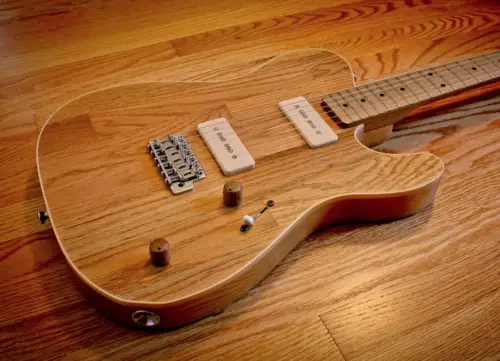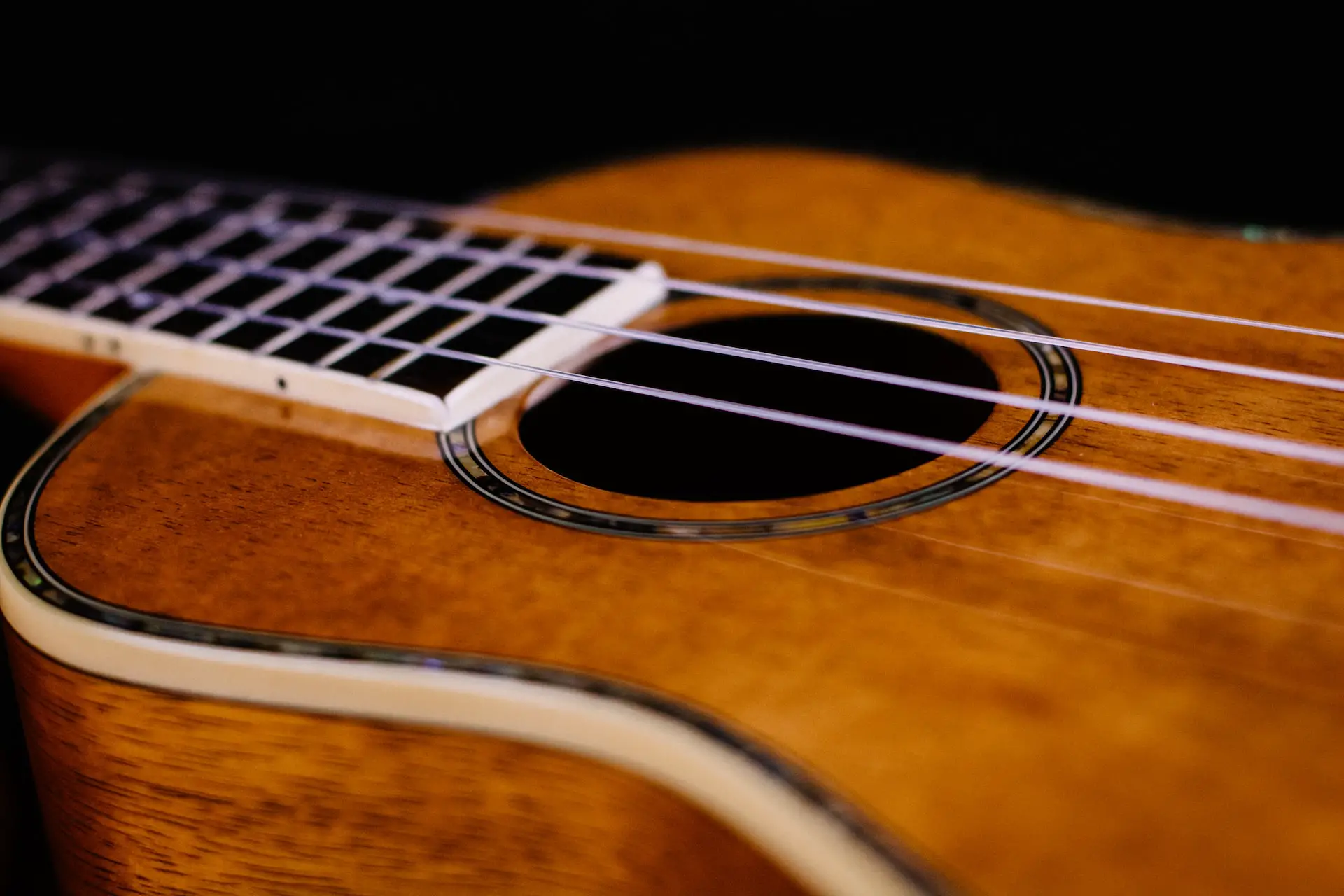With some exceptions, such as red oak, white oak, and English oak, Oak is not a good wood for guitars. Therefore, it is not a good material to build 100% of the guitar body or a guitar neck due to its porous quality and cracks easily as it ages.
As someone who has played guitar and bass for over 7 years, I can confirm that there are better possible woods for the guitar’s body than oak.
However, I am happy to ensure that there are plenty of other suitable wood substitutes with which to use to build your guitar.
In this article, we will cover several topics regarding the best materials to build a guitar, along with topics such as if you can use oaks for a fretboard and neck and what woods are best used for making a guitar.
We will also address frequently asked questions, such as whether oak is a good wood for tone and whether you can make a guitar out of pine.
Also Read: Quick Guide To Unfinished Guitar Body (With Pros & Cons)
Does Oak Make a Good Guitar Body?

Oak is not a good wood for guitar body
As a general rule of thumb, oak is not a good wood for the guitar’s body. This is due to oak being way too dense and porous. There are currently over 500 types of oak woods.
While most of these oak woods are not viable materials to build guitar bodies with, there are exceptions. These exceptions are red oak, white oak, English oak, northern silky oak, southern silky oak, and Tasmanian oak.
One advantage of these exceptional oak woods (like red, white and English oak) is that it is reasonably easy to manipulate. However, It is also a disadvantage in that it warps easily and is more prone to damage and cracking with age (this is why it is best to laminate this type of wood to ensure it lasts as long as possible).
It is also fairly heavy, so it is not a very popular choice for an electric guitar since electric guitars are usually designed from solid wood bodies.
Since acoustic guitars are typically hollow-body guitars, they generally are created from other types of wood than oak, as they do not require as much wood to make as an electric guitar would.
1. Integrity: Oak Wood
Oak wood is porous and prone to warping and damage. However, when the guitar’s body is built with oak, it is usually a laminate design. This means the body is composed of different types of wood compressed together.
For example, a guitar body could be composed of mahogany and or rosewood (both of which are high-quality woods) and then used for the top of the guitar’s body, while the rest of it could be designed with oak to save money.
It would be much cheaper to make a guitar body out of oak and mahogany than just mahogany since it would be less expensive to purchase a small quantity of mahogany and a more considerable amount of mahogany as opposed to one large piece of mahogany.
Also Read: 1vs 3 Vs 5 Piece Laminated Neck: Stability, Strength & What Is It
2. Cost: Oak Wood
Oak is generally cheaper than other types of wood that are available to use to make guitar bodies. This is why a lot of it is used in a laminate setting, such as in the example above, where two types of wood are used.
For example, oak wood sells for approximately $1200.00 to $1800.00 in United States Dollars per cubic meter. Mahogany sells for roughly $4000.00 per cubic meter.
Here’s an Ibanez guitar made of Oak. It’s not fully oak but then again, I don’t think you will ever find a fully oak guitar body.

Ibanez made of laminated Oak
3. Hardness: Oak Wood
Oakwood is not nearly as hard as other woods used to make guitars (such as mahogany). The harder the guitar wood is, the better the tone quality and sound will be.
The fact that oak wood is softer also means that it warps more easily and is more easily susceptible to physical damage.
Therefore, if any other part of the guitar is manufactured with oak (such as the neck), it is best to be laminated to protect it better.
Since the acoustic guitar body requires less wood to make than the electric guitar body does, it is not a choice typically used for acoustic guitars.
The fact that oak wood cracks easier than other types of wood also makes it a poor choice for acoustic guitars.
Can You Use Oak for Fretboard & Neck?

You can use oak for fretboard and neck
You can indeed use oak for a fretboard and a guitar neck. However, if you decide to go ahead and use oak wood, it is best to have the neck laminated. This protects the neck from warping easily and breaking easily, which oak wood is prone to do.
What Wood Is Best for Making a Guitar?
Mahogany is the best wood for making a guitar. This is based on the fact that it is relatively economical and is very resonant. It is also prevalent because it is much cheaper than the next best wood for making a guitar, which is rosewood.
Additionally, mahogany is much harder than oak. The harder the wood is, the better the guitar will sound. The hardness of mahogany means that it is less likely to break and/or become damaged with age, the way a type of wood like oak would be.
Also Read: 5 Factors Of Good Guitar Neck: Ft.Wood Material, Radius, Cost
FAQs
Q: Is Oak a Good Tone Wood?
While oak wood is good for clear, lively, and warm tones, it is still not a very popular choice for guitars because it is easily warped and damaged. However, there are exceptions to the types of oak wood that are used.
Q: Can You Make a Guitar Out of Pine?
Pine is a rare but decent tone wood that can be used to make the guitar’s body. However, it is a poor choice to use pine wood to make a neck because it is soft and weak (unless it is heavily laminated).
Like with oak, the better option would be to make a guitar from pine for the body (while heavily laminated) and make a laminate design with the rest of the guitar’s body from a higher quality of wood like mahogany.
Conclusion
We went over several topics relating to using oak wood in guitars, such as if you can use oaks for a fretboard and neck, and what woods are best used for making a guitar. We will also address frequently asked questions, such as whether oak is a good wood for tone and whether you can make a guitar out of it.





